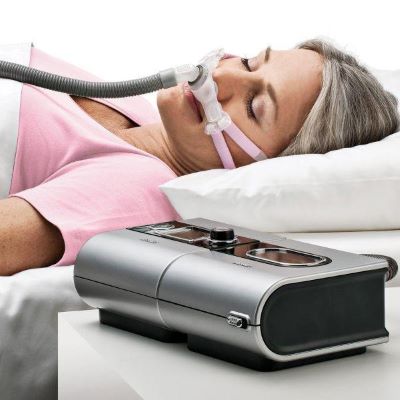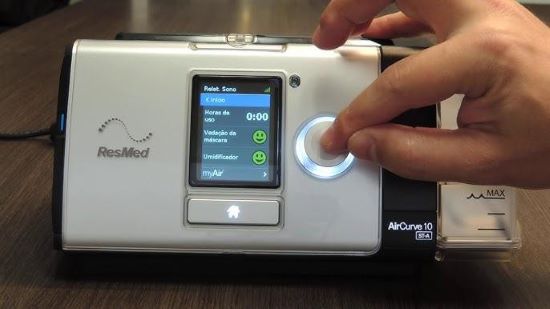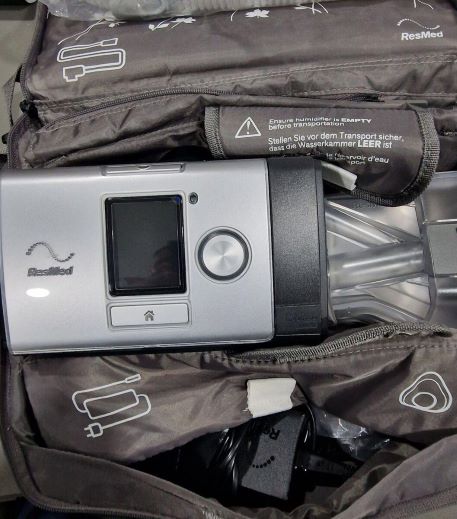Chronic respiratory diseases, such as chronic obstructive pulmonary disease (COPD), pulmonary hypertension, and other respiratory system disorders, have a significant impact on the quality of life of patients. They can lead to shortness of breath, persistent coughing, fatigue, and difficulties in daily activities. An important part of the treatment of such diseases is the maintenance of respiratory function, and this is where BiPAP and VPAP breathing devices come in.

What are BiPAP and VPAP devices?
BiPAP (Bi-level Positive Airway Pressure) is a device that delivers air at different pressures during inhalation and exhalation. It creates two levels of positive pressure: a higher pressure (IPAP) during inhalation and a lower pressure (EPAP) during exhalation, making it easier for the respiratory muscles to work and reducing the load on the lungs.
VPAP (Variable Positive Airway Pressure) is a type of BiPAP that provides more flexible pressure control. It automatically adjusts the pressure level to adapt to changes in the patient’s breathing during sleep or rest. VPAP machines can be adjusted to change pressure in response to changes in breathing rhythms, which provides comfortable and effective treatment.

Effectiveness of BiPAP and VPAP in the treatment of chronic respiratory diseases.
1. Treatment of chronic obstructive pulmonary disease (COPD).
COPD is a progressive disease that restricts airflow in the airways and is accompanied by shortness of breath, cough, and sputum production. Patients with COPD often have difficulty breathing, especially at night or during physical activity.
BiPAP devices:
- Keeps the airway open, which reduces the risk of sleep apnea and improves blood oxygenation.
- Provide easier breathing by reducing exhalation pressure, which reduces respiratory muscle fatigue.
- Reduce the frequency and intensity of COPD exacerbations, reducing the need for hospitalization.
VPAP devices:
- Adapt to changes in breathing during sleep, which is especially important for patients with unstable breathing.
- Maintain optimal ventilation levels even if the patient’s condition deteriorates.

2. Treatment of pulmonary hypertension.
Pulmonary hypertension is characterized by an increase in pressure in the vessels of the lungs, which leads to overload of the right heart and impaired respiratory function. Patients with pulmonary hypertension often experience shortness of breath, weakness, and chest pain.
BiPAP devices:
- Reduce the pressure in the pulmonary arteries by reducing the volume of work of the respiratory muscles.
- They support oxygen metabolism, which helps to avoid hypoxia and relieve symptoms of shortness of breath.
VPAP devices:
- Automatic pressure adjustment during respiratory changes avoids excessive stress on the heart and lungs.
- Maintaining a stable level of ventilation helps to alleviate the patient’s condition even in the event of cardiac or respiratory crises.

3. Treatment of respiratory failure.
Respiratory failure occurs when the lungs are unable to provide sufficient oxygen to the blood or remove excess carbon dioxide. It can be the result of various diseases such as pneumonia, asthma, or kyphoscoliosis.
BiPAP devices:
- Provide adequate lung ventilation, which helps maintain a stable level of oxygen and carbon dioxide in the blood.
- Reduce the need for intubation and mechanical ventilation.
VPAP devices:
- Automatically adjust ventilation parameters based on the patient’s needs, which is especially important for patients with unstable respiratory function.
- Alleviate symptoms such as shortness of breath and hyperventilation, reducing the risk of acute respiratory failure.
 Benefits of using BiPAP and VPAP devices for patients with chronic respiratory diseases.
Benefits of using BiPAP and VPAP devices for patients with chronic respiratory diseases.
- Improved quality of life. Patients who use BiPAP and VPAP devices report a significant improvement in sleep quality, reduced shortness of breath, and increased physical activity.
- Reduction in the number of exacerbations. Regular use of these devices can reduce the frequency of exacerbations of chronic diseases, which reduces the need for hospitalization and drug therapy.
- Reducing the burden on the heart. By improving oxygenation and ventilation of the lungs, the pressure on the cardiovascular system is reduced, which is critical for patients with pulmonary hypertension and other comorbidities.
- Support for independence. The use of portable models of BiPAP and VPAP devices allows patients to remain active, travel and lead a normal lifestyle without depending on medical institutions.
BiPAP and VPAP devices are indispensable tools for maintaining respiratory function in patients with chronic respiratory diseases. Their use not only relieves symptoms, but also significantly improves quality of life, reduces the risk of complications and helps patients maintain independence. When choosing between BiPAP and VPAP, it is important to consider the individual needs of each patient to ensure the most effective treatment. You can make a choice and order the necessary device on our website: https://medsupplycart.com/collections/bipap-vpap-machines
The post How do BiPAP and VPAP devices help in the treatment of chronic respiratory diseases? appeared first on South Florida Caribbean News.


 Benefits of using BiPAP and VPAP devices for patients with chronic respiratory diseases.
Benefits of using BiPAP and VPAP devices for patients with chronic respiratory diseases.